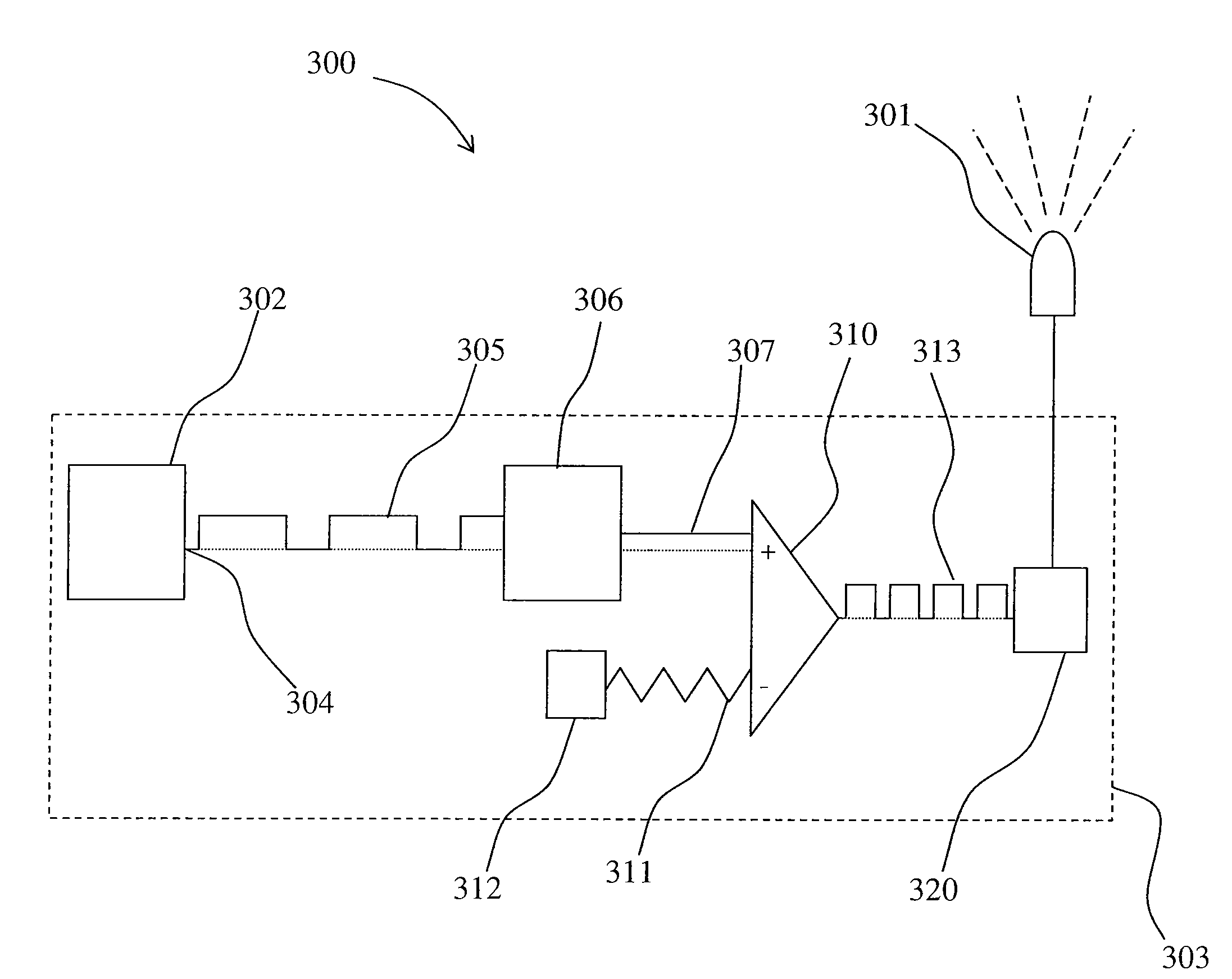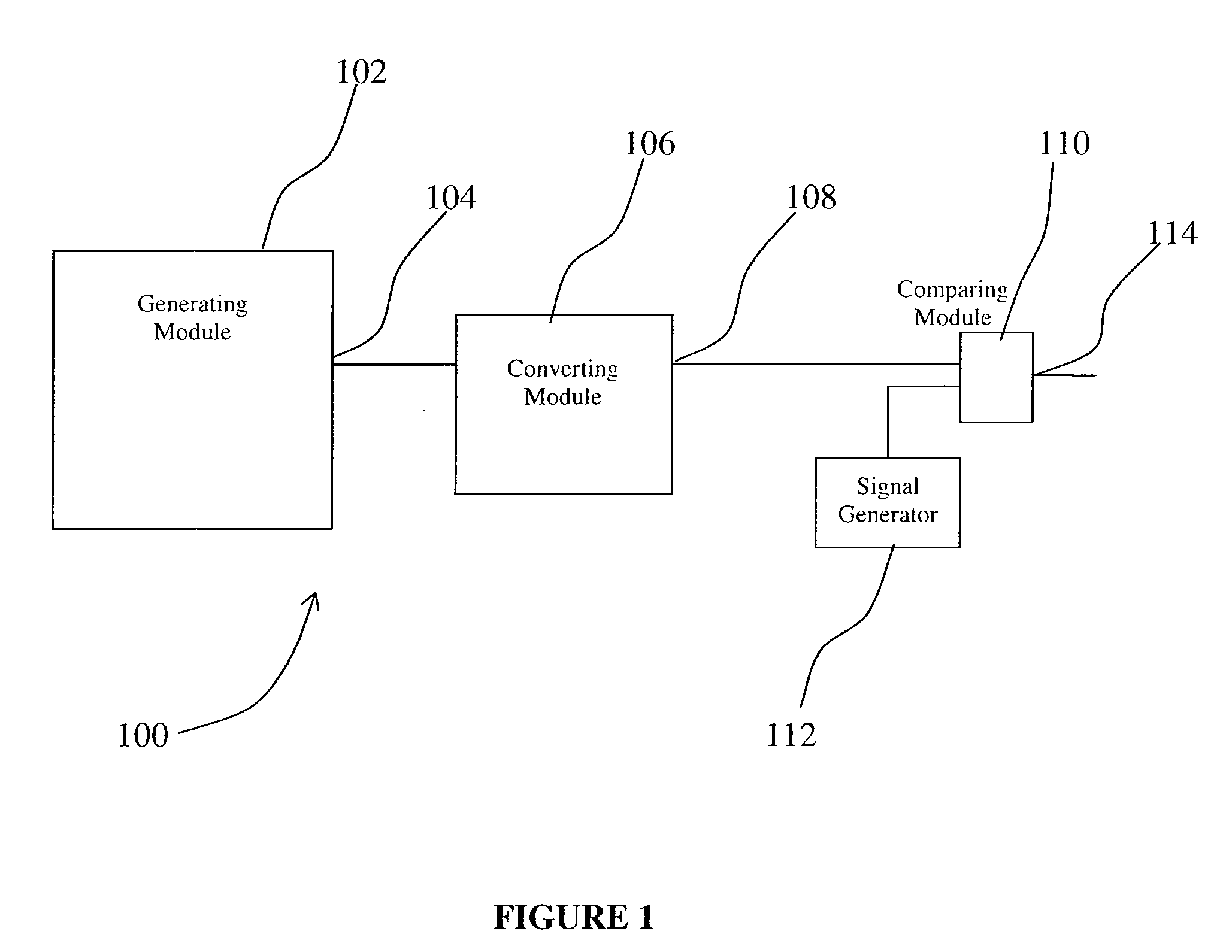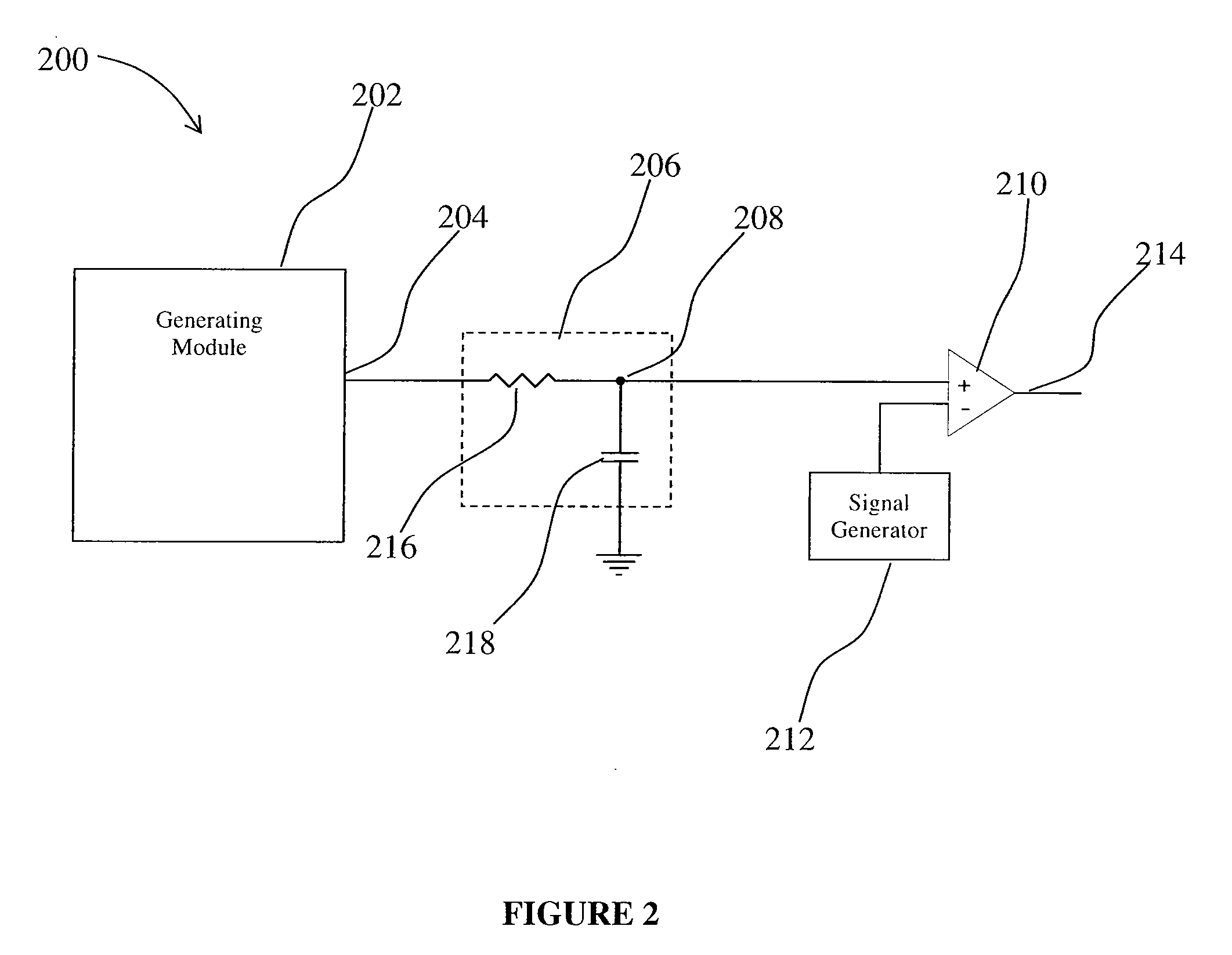Pwm method and apparatus, and light source driven thereby
a technology of pulse width and modulation method, which is applied in the field of pulse width modulation (pwm) method and apparatus, and the direction of pulse technique, process and machine control, etc., can solve the problems of prohibitively expensive and impractical for most lighting applications, and achieve adequate means for generating pwm signals
- Summary
- Abstract
- Description
- Claims
- Application Information
AI Technical Summary
Benefits of technology
Problems solved by technology
Method used
Image
Examples
example 1
[0072]With reference to FIG. 2, an apparatus for generating a PWM signal, generally referred to using the numeral 200, and in accordance with one embodiment of the present invention, will now be described. The apparatus 200 generally comprises a generating module 202 for generating at output 204 a first PWM signal having a desired resolution and a first frequency. The first PWM signal is then converted by a converting module 206 to generate an analog signal at node 208 indicative of the duty-cycle of the first PWM signal. The analog signal is then provided as input to a comparing module 210, such as a high speed comparator or the like, adapted to compare the analog signal to a reference signal having a desired frequency (illustratively provided by signal generator 212), and thereby generate a second PWM signal substantially having the desired frequency and resolution at output 214.
[0073]The generating module 202 may comprise a microprocessor or the like, adapted to generate the firs...
example 2
[0076]With reference now to FIG. 3, a light source driven by a PWM signal, generally referred to using the numeral 300, and in accordance with one embodiment of the present invention, will now be described. The light source 300 generally comprises a light-emitting element 301 and a driving system 303 therefor.
[0077]In general, the driving system 303 comprises a generating module 302 for generating at output 304 a first PWM signal 305 having a desired resolution and a first frequency. The first PWM signal is then converted by a converting module 306 to generate an analog signal 307 indicative of the duty-cycle of the first PWM signal 305. The analog signal 307 is then provided as input to a comparing module 310, such as a high speed comparator or the like, adapted to compare the analog signal 307 to a reference waveform, as in triangle or saw tooth signal 311, having a desired frequency (illustratively provided by signal generator 312). By comparing the analog signal 307 with the ref...
example 3
[0083]With reference now to FIG. 4, a light source driven by a PWM signal, generally referred to using the numeral 400, and in accordance with one embodiment of the present invention, will now be described. The light source 400 generally comprises three light-emitting elements 401, or groups or arrays thereof, and a driving system 403 therefor.
[0084]In general, the driving module 403 comprises a generating module 402 for generating at output 404 respective first PWM signals 405 having a substantially same desired resolution. In general, a first PWM signal 405 is generated for each light-emitting element 401, or group or array of a given type or colour of light-emitting elements, and communicated via a respective channel. Each PWM signal 405 is then converted by a converting module 406 to generate a respective analog signal, as in signal 407, indicative of a duty-cycle thereof. The respective analog signals 407 are then provided as input to a comparing module 410, such as one or more...
PUM
 Login to View More
Login to View More Abstract
Description
Claims
Application Information
 Login to View More
Login to View More - R&D
- Intellectual Property
- Life Sciences
- Materials
- Tech Scout
- Unparalleled Data Quality
- Higher Quality Content
- 60% Fewer Hallucinations
Browse by: Latest US Patents, China's latest patents, Technical Efficacy Thesaurus, Application Domain, Technology Topic, Popular Technical Reports.
© 2025 PatSnap. All rights reserved.Legal|Privacy policy|Modern Slavery Act Transparency Statement|Sitemap|About US| Contact US: help@patsnap.com



